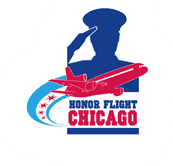Army Vietnam War Flight date: 05/14/25
Alan Hoeksema was raised by his parents, George and May, who lived in the Englewood neighborhood of Chicago at the time of his birth. As the family grew, George and May relocated to a new home in the Roseland area. Being the third oldest child of a family of nine children, Alan completed grade school and then attended Chicago Christian High School in Palos Heights, Illinois.
Shortly after graduating high school, and having no immediate intentions of going to college, Alan was classified by the selective service as 1-A and upon reaching the age of twenty, Alan received his official “induction letter” to report for military service on February 25, 1969. With a few of his buddies who received the same induction letter and reporting date, Alan’s father George, a World War II veteran, drove the future troops to the Army Induction Center on West Van Buren Street in Chicago. After initial processing, they all boarded a bus to Midway Airport and boarded a flight to Fort Leonard Wood in Missouri to begin their Basic Training. After a quick twelve weeks of Basic Training, Alan made a brief stop at Fort Riley, KS and then reported to Fort Ord, California for his Advanced Individual Training. As the war was raging in Vietnam and most inductees were being assigned to infantry division and would serve in Vietnam, Alan received small arm weapons training and, as Alan explained, it was “bang zoom” off to Vietnam in July of 1969.
Alan’s initial reaction upon his arrival in Vietnam was that it was a very “hot and humid” country. His first stop was at Cam Rahn Bay where Alan spent six days in an that included an introduction to the culture of the South Vietnamese people, what — as soldiers — they could and could not do, training on encountering enemy troops in the field and, most importantly, how to detect and avoid “booby traps” placed by enemy forces.
Completing his in-country orientation, Alan was transported to Chu Lai Air Base where he was assigned to the 198th Light Infantry Brigade which was part of the Americal Division. “We were not sent anywhere as a group, we were sent to increase support to a unit or to fill holes where needed,” Alan explained. From Chu Lai Air Base, Alan joined up with his unit for the next year at LZ Bayonet which was approximately fifteen miles South of Chu Lai Air Base. LZ Bayonet was a forward Artillery post which was assigned to provide support and security to the Chu Lai Air Base. Chu Lai Air Base, after being hit hard during the 1968 Tet Offensive, needed units like LZ Bayonet to provide air base perimeter security to avoid perimeter infiltration and prevent enemy rocket attacks.
“We would go out on patrols from LZ Bayonet by helicopter and would land in various areas of the country” Alan explained. Operating in a grid system, “we would be placed in areas from rice paddies, to foothills, and on patrol in the mountain ranges.” A usual patrol could last a couple of weeks, but Alan also recalled being out close to sixty days at a time. Alan’s unit was always shorthanded, as they would patrol grids with a unit less than squad size, but he was thankful. A lot of the “hard core” fighting was taking place in areas near the North and South Vietnam border, “Looking back, I was fortunate to be assigned to the unit I was placed at, we had combat situations, but we all knew what others were going through up north close to the border in fighting the highly trained North Vietnamese Army,” Alan stated.
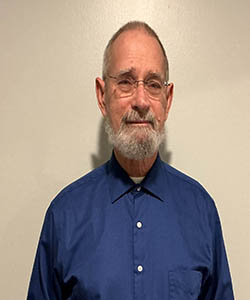
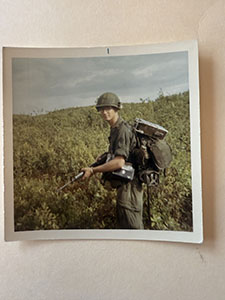
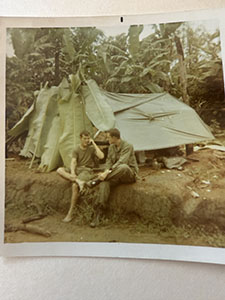
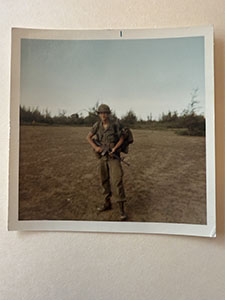
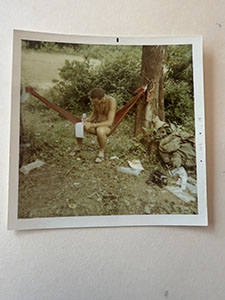
While on patrol during the day, Al explained, they were more or less stuck in the middle of villages and farm areas. His squad’s enemy during patrols were the Viet Cong and guerillas that were in the area. Alan related that during the day, they would patrol in the jungle and would go into villages. “Our unit was very respectful to the villagers, and I believe that led to less firefight encounters in the field” he recalled. Other squads, not being so respectful to the villagers, “would see more firefights and ambushes by VC and guerillas” in the field. They always had eyes on us and knew our movements,” Alan recalled. “If a squad harassed an innocent village, there would be some sort of payback to that squad.”
In the evening, his squad would make camp and prepare ambushes in the field, “we would set-up ambushes on roadways, paths or known routes in the jungle,” Alan explained. “If anyone would be traveling at night, it was assumed that they were the enemy as the villagers knew better to be traveling during the night as they would be identified as the enemy.” Al’s squad would also have high ranking officers join them in the field. Al specifically recalled that Norman Schwarzkopf, who was the commander of his Brigade, would join them on some of the nightly ambushes in the field, and then would have breakfast with the squad before returning to his command post. “He was a soldier’s soldier, a true professionally trained soldier who made the Army his lifetime career,” Alan opined.
Meeting Lieutenant Colonel Schwarzkopf was not the only time Alan would meet the future General. While preparing for his one-week R&R, Alan went to his unit’s storage area to retrieve his civilian clothing and articles only to learn that some officer, close to his size and weight, liberated Alan’s personal items for their own use. Alan, madder than a wet hen, stormed into Norman’s office and read him the riot act for someone stealing his clothes. Alan recalled, after his tirade, he was ordered to immediate guard duty in a bunker for the evening. “I was busted by Schwarzkopf. I was wrong and he was right, he did the right thing.” Later that evening while on guard duty, a courier, sent by Schwartzdopf, arrived at his bunker and personally informed him that his clothing and personal items were located and were back in his footlocker in the storage unit. The next day, Alan was off to Bangkok for a week of R&R.
After the week of R&R, Alan returned to patrols with his unit. Working the grids as assigned and the nightly ambush assignments, the annual monsoons hit South Vietnam. “It rained for close to sixty days straight” Al recalled. Alan stated that it was almost impossible to move about, the rice paddy field were flooded and man-made dikes failed. “The only plus was that the VC and guerillas were less active during that time, they were in their hooches with their wives and kids till the monsoons let up.”
Alan, during his time in Vietnam, viewed the information coming from command as very intermittent. “We would be given an assignment not knowing what the objective was from our command, our squad leaders didn’t even know, it was very frustrating.”
One instance of Alan’s grievances was when his 198th Infantry Brigade, comprising approximately 450 troops, was ordered to totally replace the 196th Infantry Brigade. “We were uprooted and flown into an open field in a valley. “They didn’t tell us that the field was fully “booby trapped.” Alan explained that as soon as troops stepped ten feet away from the copters, they were setting off booby traps. Alan estimated that close to a third of his unit were injured and had to be medivac out of the field. “The rest of us just sat down, we couldn’t move for fear of setting off another booby trap.” Alan recalled that it wasn’t until the next morning when the Army sent in Armored Personnel Carriers to clear the booby traps so they could be extracted from the valley. “I’m still trying to figure that one out,” Alan stated.
Probably the most horrific occurrence the Alan recalled was when his unit set up a night camp near My Lai. Alan said it was a very warm night and he was staring out to the stars when suddenly, a phosphorous flare, known to the troops as a “Willie Peter” lit up the night sky above. “Almost instantaneously, two artillery rounds went off above us sending shrapnel all over our camp, two of our own were killed by the flying shrapnel.” As it turned out, the Willie Peter and the two artillery rounds were from our own artillery base, friendly fire deaths.
Initially, the Army reported that the two men were enemy casualties. It was later learned that the deaths were caused by friendly fire which fueled a major investigation into the actions of the artillery commander. After it was learned by members of Alan’s unit that the two artillery shells were from friendly forces, some members of his unit sent a letter to one of the mothers of the soldier explaining that her son’s death was not from enemy artillery but from Army artillery. After public outcry and congressional investigation, the Army withdrew their position that the deaths were caused by enemy fire but were caused by ‘Friendly Fire.” As a result of this incident that Alan witnessed and was a part of, a book entitled “Friendly Fire” was authored by D.B.D. Bryan which then became an Emmy Award-winning movie starring Carol Burnett.
Alan enjoyed parts of being in Vietnam. Outside of the run-in with Norman Scharzkopf, and a few other officers during his tour, Alan was favored by his immediate officers. Alan recalled he was allowed to attend a Bob Hope show in Da Nang! “A helicopter was sent to pick me up and to bring me back to my unit after the show, it was a great experience, I was one of those guys who climbed a pole to see the show!” Alan exclaimed. Alan also noted that when they were out on a few of the 60-day patrols, upon returning, they had a two day stand down on the shores of the South China Sea that included 24-hour open kitchens, floor shows and beach huts to “decompress in.”
Alan completed his tour in South Vietnam in July, 1970 and returned to the States. Arriving in San Francisco late to catch the Chicago flight, he was home with parents and family the next day. Being left with approximately five months in his enlistment, Alan was sent to Fort Carson where he was assigned to the Mechanized Unit to finish up his tour of duty. “I don’t know why they just didn’t let me have an early out, with four months left before my discharge. The command at Fort Carson didn’t want to train me on the vehicles, so I just reported in the morning and left at the end of the day,”
Alan, after returning home from Vietnam, was privileged when he was asked to be a Honor Guard Member in D.C. but gave pause when he was informed that he would have to extend his enlistment. “No thank you” was the end of that re-enlistment conversation.
Alan was honorably discharged on February 14, 1971. Alan continues to work as an interior/exterior painter and enjoys semi-retirement with his wife, Carol. Currently residing in Crete, they recently celebrated their 40th wedding anniversary.
Thank you, Sgt. Alan Hoeksema, United States Army, for your dedicated service to our country. Enjoy your well-deserved Honor Flight with your fellow veterans!

